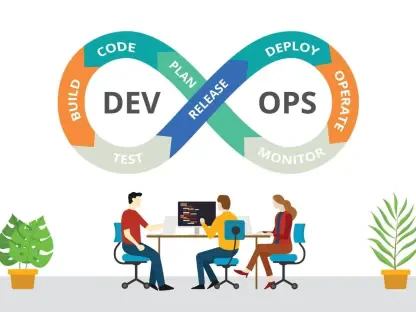In an era marked by rapid technological evolution, the integration of artificial intelligence (AI) into everyday computing systems is becoming crucial. Microsoft’s latest breakthrough, Mu, exemplifies this trend. As a small language model (SLM), Mu is reshaping the Windows platform by embedding advanced AI within the Windows Settings application, offering users a more intuitive and responsive interface. This analysis looks at the implications of Mu’s deployment, assessing how it aligns with current market trends and projecting its future impact on the tech industry.
Market Landscape of AI Integration
The integration of AI into operating systems has witnessed transformative changes. While AI’s application in basic digital assistants dates back several years, today’s landscape demands more sophisticated solutions. Microsoft’s Mu epitomizes this shift, moving beyond cloud-only models toward leveraging local device capabilities. The emergence of edge-based AI models like Mu underscores a growing need to prioritize efficiency and localized processing, pushing the limits of conventional AI deployment strategies.
Strategic Implementation and Industry Impacts
Architectural Advancements in AI Models
Mu stands out in the AI sector, employing an efficient encoder-decoder framework specifically designed for local neural processing units (NPUs). This architecture challenges the traditional dependence on cloud-based resources by improving performance on consumer-grade hardware. The Mu model capitalizes on NPUs embedded within PCs, demonstrating how smaller, task-specific AI can thrive under hardware constraints previously considered limiting.
Transition to Localized Intelligence
Microsoft’s decision to localize AI processing with Mu represents a departure from centralized cloud dependency. By transitioning AI capabilities onto devices, the company aims to reduce data processing latency and save bandwidth. This movement aligns with broader tech trends favoring decentralized AI, signaling a potential pivot in the balance of power in the industry. Still, this approach requires addressing the feasibility and scalability of widespread AI adoption across diverse technological landscapes.
Analyzing Global Dynamics and Challenges
Mu’s introduction exposes variation in technological capabilities and user adoption across regions, potentially influencing market responses differently. Variations in infrastructure might affect how quickly Mu’s benefits are realized worldwide. With such disparities, strategic managerial approaches become vital, ensuring equitable enhancement of AI capabilities even in less technologically developed markets, balancing adoption rates, and maximizing user satisfaction globally.
Future Trajectory and Industry Predictions
Looking at Mu’s trajectory, the AI-enhanced Windows experience heralds a shift toward widespread adoption of edge AI. As industries continue to evolve, new regulations and technologies will likely shape the market further. Experts predict such advances will redefine software development processes, emphasizing the importance of maintaining high-performance standards alongside expanded AI capabilities across more applications, covering all industries from consumer electronics to enterprise solutions.
Leveraging AI in Windows Systems
Exploring Mu’s potential opens avenues for optimizing user interactions through AI-powered insights. Businesses stand to gain significantly by integrating scalable models and aligning hardware-software synergies. Awareness of regulatory changes affecting AI in operating systems will yield strategic advantages, enabling companies to stay ahead of the curve. Strategies focusing on future developments and synergies will become valuable as technology advances.
Reflection and Strategic Considerations
Summing up, Mu represents a pivotal advancement in AI technology, influencing user experiences while setting a benchmark for future developments. Microsoft’s emphasis on tailored technology marks substantial progress in optimizing computing experiences through localized AI. Strategically, stakeholders must prepare for emerging trends by embracing AI-driven enhancements and refining global strategies to suit regional technological strengths and challenges. This effort is essential for maintaining leadership and addressing the evolving demands of the AI landscape.









